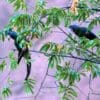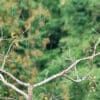Blue-headed Macaw
Also known as:
Coulon's Macaw
Also known as:
Coulon's Macaw
DID YOU KNOW?
The Blue-headed Macaw is not usually found in flocks but in pairs or family trios.

Primolius

couloni
Size:
40-41 cm (15.6-16 in)
Weight:
207-294 g.
Subspecies including nominate:
one
Colour Adult:
Both adults medium-sized, mostly green, blue head, face bare, blue/grey and dark with fine lines of feathers; tail brown/red with green part way to tip. Beak grey/black. Eye yellow.
Colour Juvenile:
As in adult but with shorter tail, horn-coloured beak. Eye grey.
Call:
Quiet, purring call while in flight; soft nasal slightly rasping notes; shrieks and squawks less raucous than Blue-winged Macaw.
More Information:
Content Sources:
CITES
Avibase
BirdLife International
Cornell Lab of Ornithology/Birds of the World
A Guide to Parrots of the World, Juniper and Parr, 1998
Parrots: Status Survey and Conservation Plan 2000-2004, Snyder, McGowan, Gilardi and Grajal, 2000.
Parrots of the World, Forshaw and Cooper, 1977, 1989.
Lexicon of Parrots, Thomas Arndt.
Parrots of the World, Forshaw, 2006.
Captive Status:
Extremely rare.
Longevity:
—
Housing:
An enclosure at least 3 m (9.8 ft) long if indoors, with access to 15 m (49 ft) outdoor flight if possible.
Diet:
Seed mix such as: sunflower, safflower, millet, canary, oats; pine nuts; dried mountain ash (rowan) berries; fruit such as: apple, pear, banana, orange, cactus fruits; vegetables such as: carrot, celery, green peas and beans, corn on the cob; green leaves such as: Swiss chard, kale, dandelion, chickweed; eggfood and calcium supplements during breeding; complete pellet for macaws.
Enrichment:
Provide lots of chew branches, sterilized pine cones, and other bird-safe chew items (ie: vegetable tanned leather toys); overhead misters or shallow water bowls for bathing.
Nest Box Size:
Diagonal nest box 22 cm x 40 cm x 30 cm (8.6 x 15.6 x 11.7 in).
Clutch Size:
3 to 4
Fledging Age:
12 weeks
Hatch Weight:
—
Peak Weight:
—
Weaning Weight:
—
World Population:
9200-46,000 mature individuals, decreasing.
IUCN Red List Status:
Vulnerable
CITES Listing:
Appendix I
Threat Summary:
Not considered a conservation priority until 21st century, as a lack of reliable population data has made accurate assessment difficult. Reported as uncommon to rare but can be locally common, especially around settlements. Appears to not be affected adversely by patchwork forest clearance. Trapping, although illegal, is increasing. The species has a very low reproductive rate and continued harvest is likely a serious threat to its survival.
Range:
E Peru to W Brazil; N Bolivia, east of Andes and south to 14 latitude.
Habitat:
Found 150-1300 m (492-4264 ft); upper tropical forests in disturbed or partly open areas with birds mostly occurring at forest edge along rivers, clearings and forested settled areas. Also in swampy habitats.
Wild Diet:
Not recorded.
Ecology and Behaviour:
Not very gregarious, instead found in pairs or threes. Possibly seasonally nomadic.
Clutch and Egg Size:
3-4 eggs
Breeding Season:
Young birds seen with adults in April.
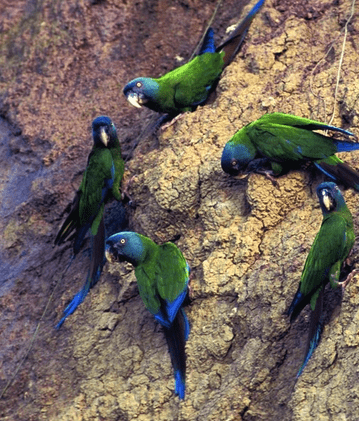
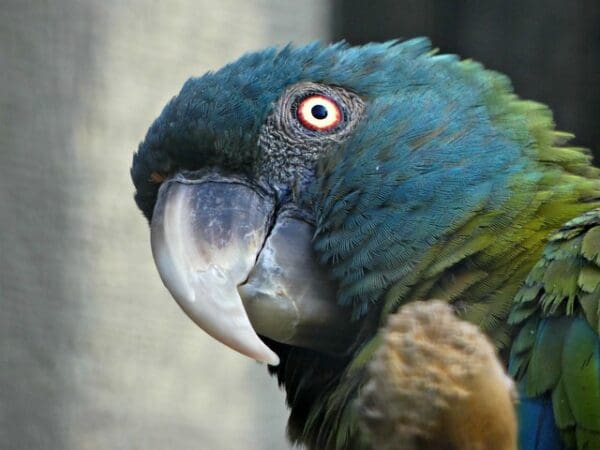
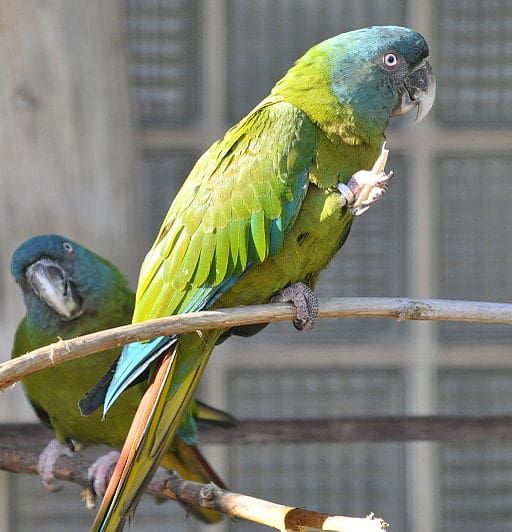
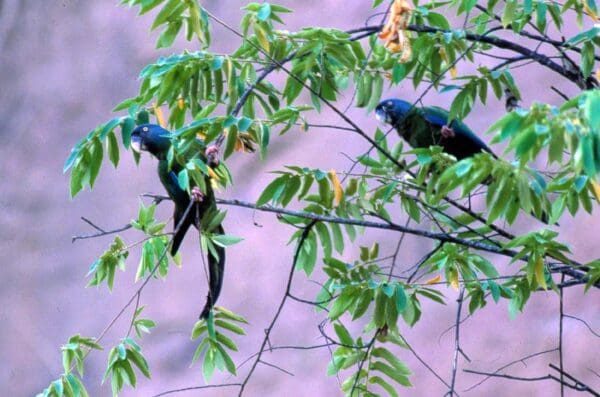
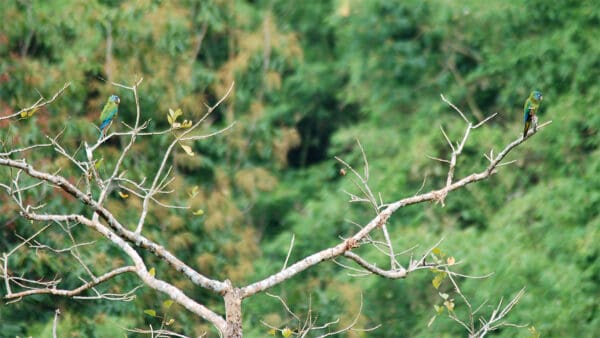
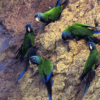
![© Linda De Volder [CC BY-NC-ND 2.0] via Flickr Closeup of a Blue-headed Macaw](https://parrots.org/wp-content/uploads/2023/01/wpt_Blue-headed-Macaw_1139-9-100x100.jpg)
![© Quartl [CC BY-SA 3.0] via Wikimedia Commons Blue-headed Macaws at Vogelpark Walsrode perch in a cage](https://parrots.org/wp-content/uploads/2023/01/wpt_Blue-headed-Macaw_1139-5-100x100.jpg)
